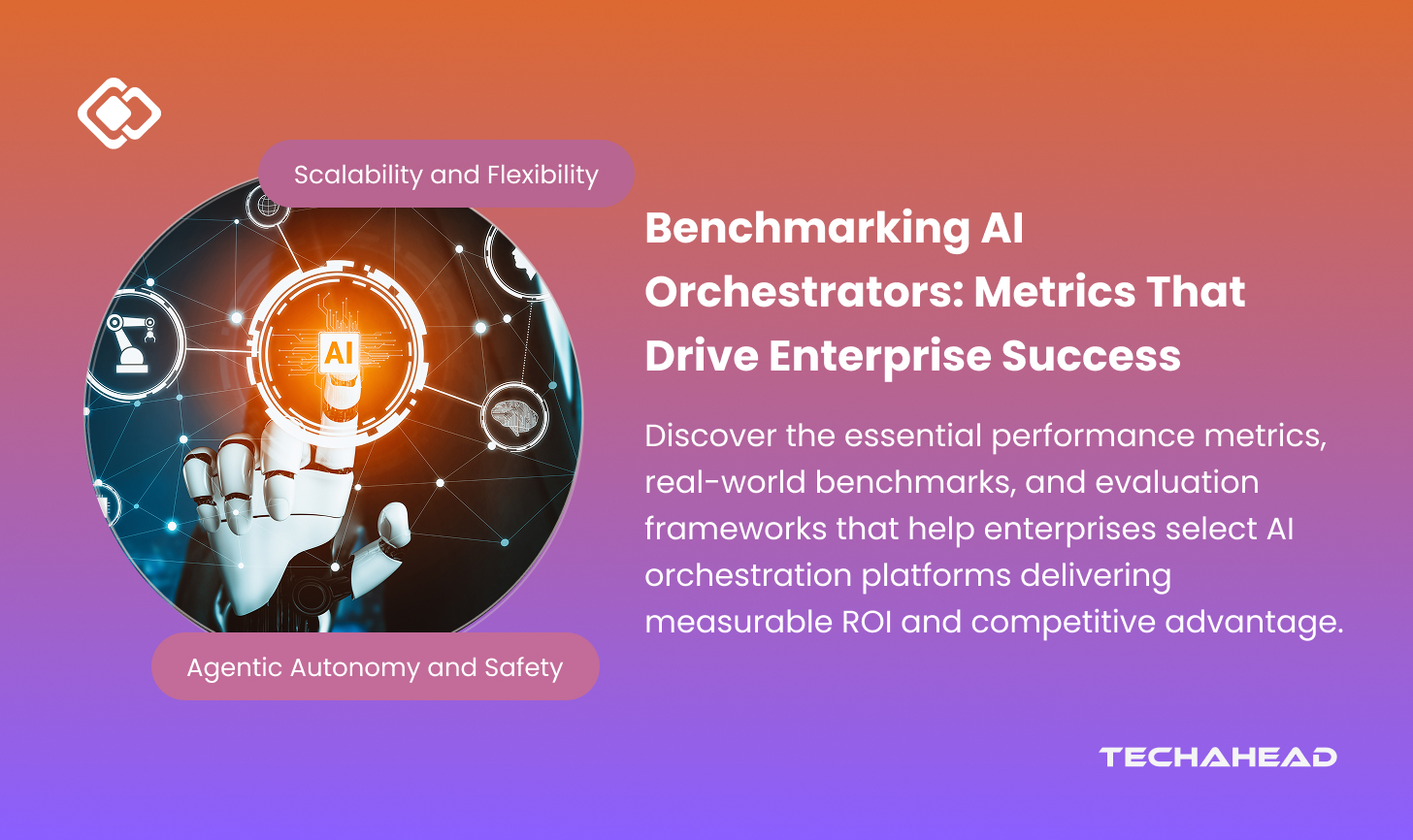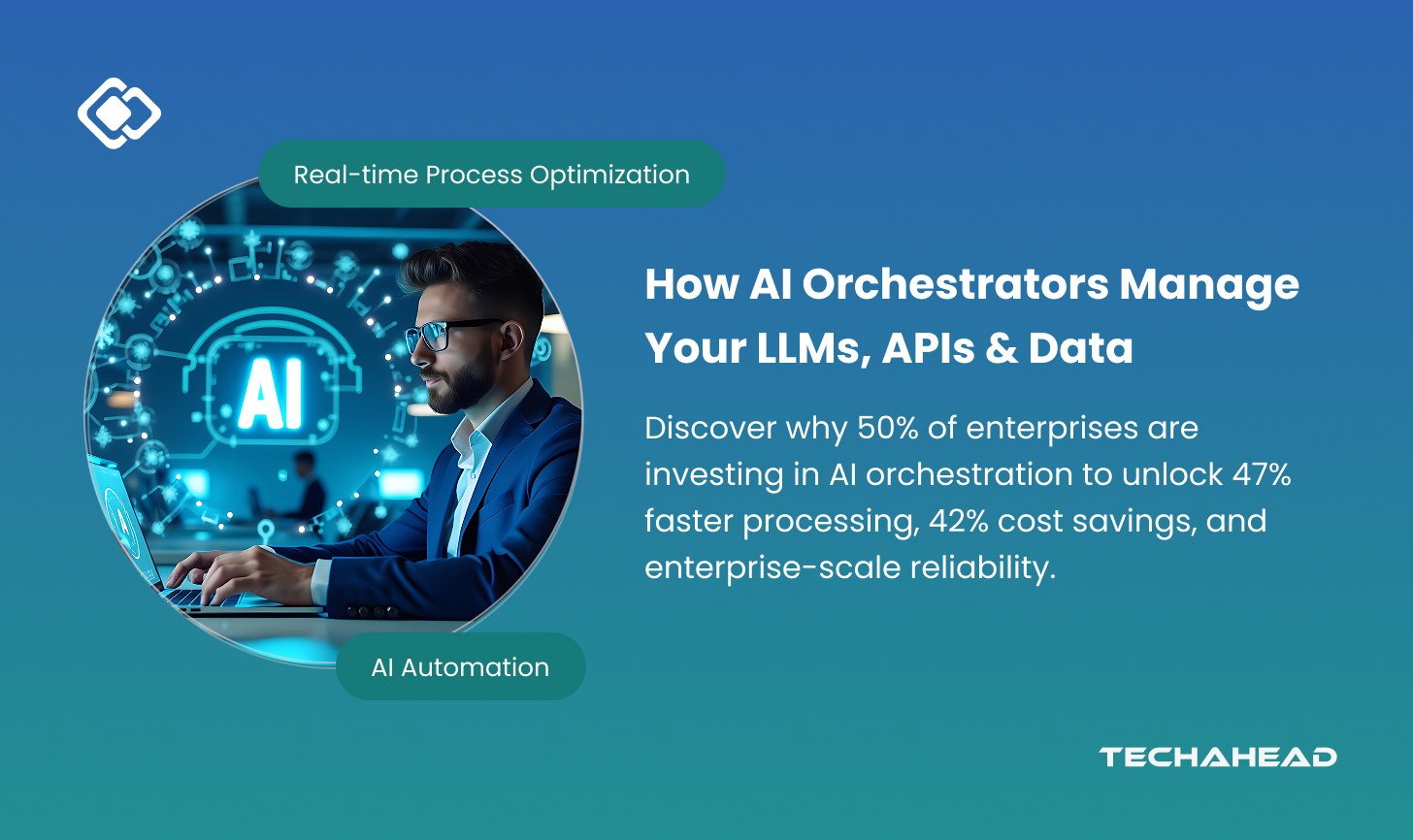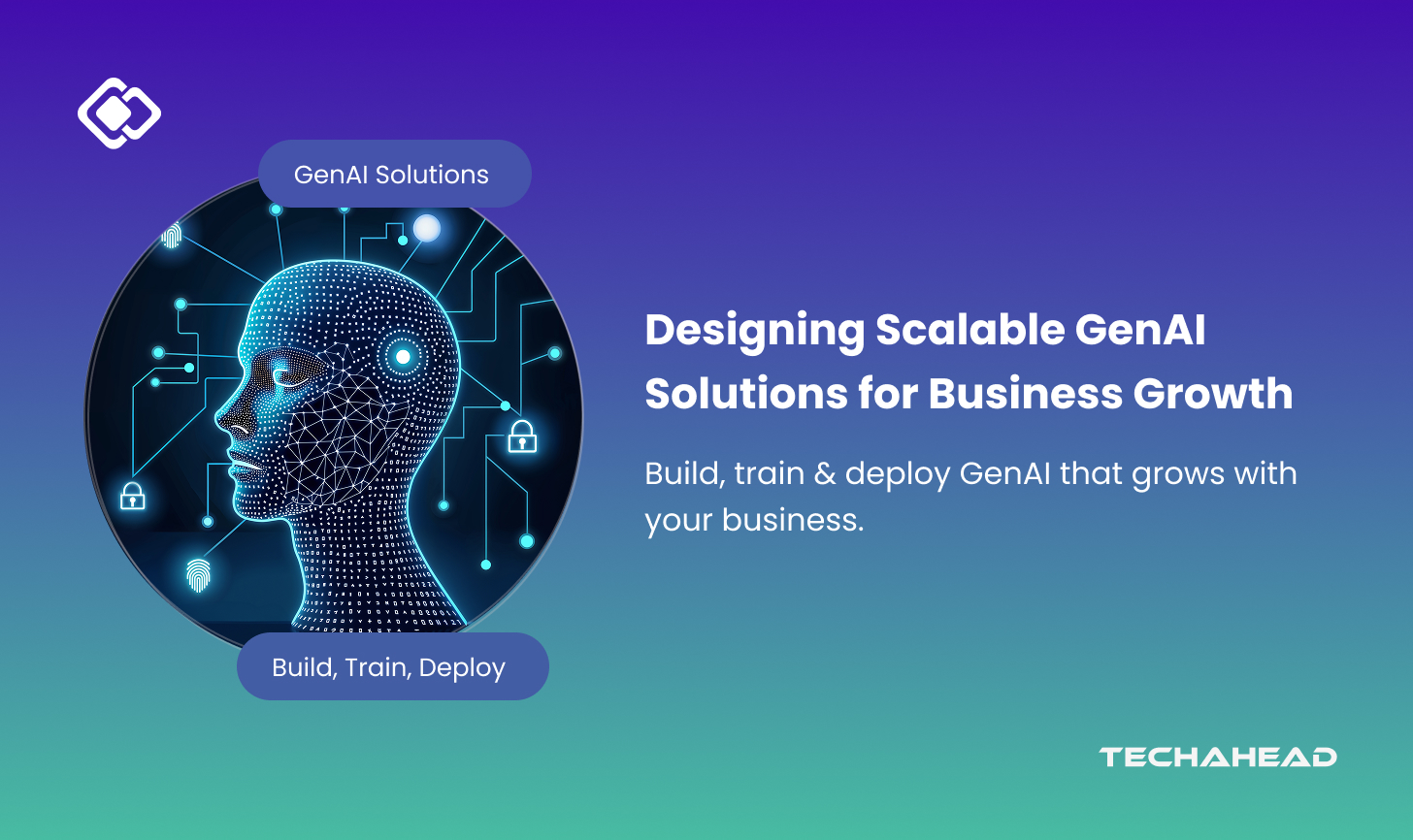The enterprise AI landscape is undergoing a fundamental transformation. As organizations deploy increasingly sophisticated AI agents, multi-model workflows, and complex automation pipelines, the need for robust orchestration platforms has become critical. Yet with dozens of platforms claiming superior performance, how do technical leaders separate marketing hype from measurable value?

The AI orchestration market reached $8.2 billion in 2024 and is projected to grow at a compound annual growth rate of 28.6% through 2030, according to Grand View Research.
This explosive growth reflects enterprises’ urgent need to coordinate multiple AI models, manage complex workflows, and ensure reliable automation at scale. But as investment increases, so does the imperative for rigorous evaluation—making informed platform selection decisions that can mean the difference between transformative efficiency gains and costly technical debt.
This guide presents a comprehensive framework for evaluating AI orchestrators through metrics that directly impact business outcomes, supported by real-world benchmarks and case studies from industry leaders.
Key Takeaways
- Learn which throughput, latency, and uptime metrics separate enterprise-grade AI orchestrators from basic platforms.
- Discover how Klarna, Morgan Stanley, and Moderna achieved transformative results with measurable benchmarks and business impact.
- Understand the total cost of ownership including hidden expenses beyond platform licensing that impact ROI.
- Get actionable evaluation frameworks, testing protocols, and decision matrices to avoid costly vendor lock-in mistakes.
- Identify essential security certifications, compliance requirements, and audit capabilities for HIPAA, GDPR, and SOC 2.
- Evaluate integration ecosystems and API flexibility that determine implementation speed and reduce long-term technical debt.
- Implement continuous optimization strategies that deliver compounding performance gains and sustained competitive advantage over time.
Why Benchmarking AI Orchestrators Is Mission-Critical
AI orchestration platforms serve as the central nervous system for modern enterprise automation, coordinating everything from customer service chatbots to supply chain optimization agents. The complexity of these systems—integrating multiple large language models, legacy APIs, real-time data streams, and human-in-the-loop workflows—creates significant evaluation challenges.
The stakes are substantial. Organizations implementing well-architected orchestration frameworks report dramatic improvements: Deloitte’s 2024 State of AI survey found that companies with mature AI orchestration capabilities achieved 40-60% faster time-to-market for new AI applications and reduced operational costs by 25-35% compared to those using fragmented, point-solution approaches.

Conversely, poor platform selection carries heavy penalties. Gartner research indicates that 54% of AI projects fail to move from pilot to production, with inadequate orchestration infrastructure cited as a primary factor.
The consequences include vendor lock-in that restricts future innovation, compliance gaps that create regulatory exposure, and scalability bottlenecks that prevent expansion beyond initial use cases.
Consider the financial impact: A Fortune 500 retailer implementing the wrong orchestration platform spent 18 months and $12 million before abandoning the project due to latency issues that made real-time inventory management impossible. Rigorous upfront benchmarking against their specific performance requirements could have identified these limitations during the evaluation phase.
Core Metrics: The Foundation of Orchestrator Evaluation
Effective benchmarking requires measuring what actually matters to business outcomes. Here are the essential metrics every evaluation framework should include:
Performance Metrics
Throughput measures the volume of tasks, transactions, or workflow executions a platform can process per unit of time. In production environments, leading orchestration platforms demonstrate wide performance ranges depending on workflow complexity. Microsoft’s research on Azure AI Orchestrator shows throughput ranging from 100-500 requests per second for complex multi-agent workflows to over 2,000 requests per second for simpler API orchestration tasks.
Real-world context matters significantly. Klarna’s AI assistant, powered by OpenAI and orchestrated through custom infrastructure, handles the equivalent workload of 700 full-time customer service agents, processing millions of conversations with sub-second response times. This demonstrates that throughput must be evaluated against specific use case requirements rather than abstract maximums.

Source: TechAhead Research Team
Latency—the time elapsed from request initiation to response delivery—directly impacts user experience in customer-facing applications and operational efficiency in backend processes. Industry benchmarks from AWS show that enterprise-grade orchestrators typically achieve end-to-end latency between 200-800 milliseconds for standard workflows, though this varies dramatically based on the complexity of model calls, external API dependencies, and data retrieval requirements.
Bloomberg’s internal AI orchestration platform, which coordinates financial data analysis across multiple specialized models, maintains p95 latency under 1.2 seconds for complex analytical queries—fast enough for real-time trading desk support but achieved through careful architectural optimization and strategic caching.
Reliability and Availability
Uptime and reliability serve as foundational requirements for business-critical applications. The modern enterprise standard has evolved to 99.95% availability (approximately 4.4 hours of downtime annually), with tier-one providers like Google Cloud’s Vertex AI and AWS Bedrock offering 99.99% SLA guarantees for their orchestration layers.
However, true reliability extends beyond simple uptime metrics. Anthropic’s Claude Enterprise deployment architecture includes automatic failover across multiple regions, graceful degradation when individual model endpoints experience issues, and circuit breaker patterns that prevent cascade failures—capabilities that should be rigorously tested during evaluation.
Goal Fulfillment and Containment Rate measures how effectively orchestrated AI agents complete tasks without requiring human intervention or escalation. In customer service applications, industry-leading implementations achieve 75-85% containment rates, meaning three-quarters of customer interactions reach successful resolution without human handoff.
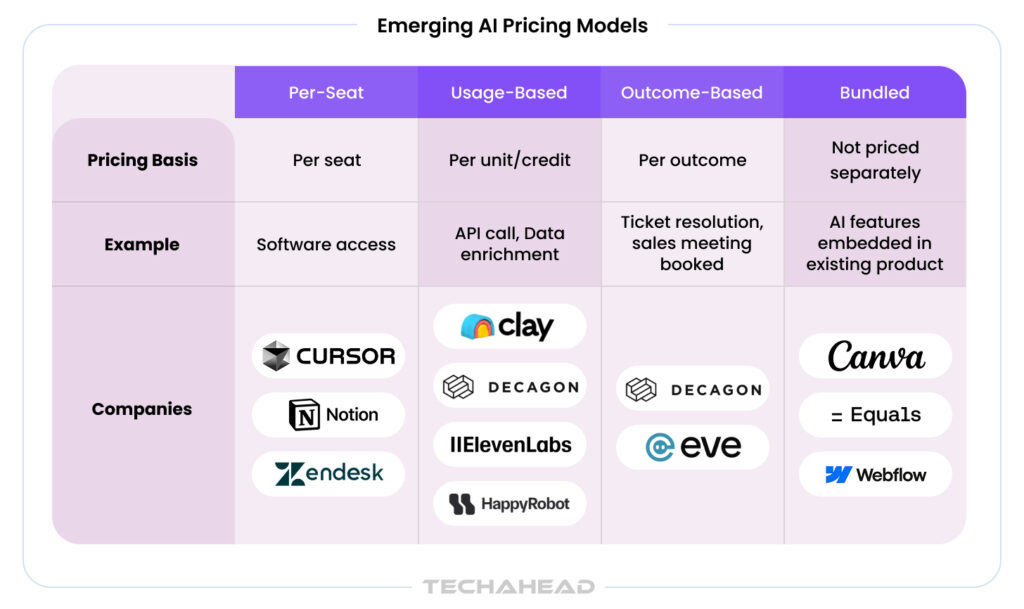
Capital One’s Eno intelligent assistant demonstrates this metric in practice: the orchestration platform routes inquiries across specialized financial service agents, achieving an 82% first-contact resolution rate for common banking tasks like balance inquiries, transaction disputes, and payment scheduling. This containment rate directly translates to reduced support costs and improved customer satisfaction.
Resource Utilization and Cost Efficiency
Compute and Memory Efficiency determines the infrastructure costs associated with running orchestration workflows at scale. This metric proves particularly important as organizations scale from hundreds to millions of daily transactions.
A 2024 analysis by a16z found that AI application costs typically break down as: 60% for model inference, 25% for orchestration and infrastructure, and 15% for data processing and storage. Efficient orchestrators minimize the middle component through intelligent caching, request batching, and optimal routing strategies.
Shopify’s implementation of AI-powered merchant support demonstrates cost optimization through smart orchestration. By implementing dynamic routing that directs simple queries to smaller, faster models while reserving larger models for complex reasoning tasks, they reduced average inference costs by 40% while maintaining response quality—a benchmark achieved through careful orchestration architecture.

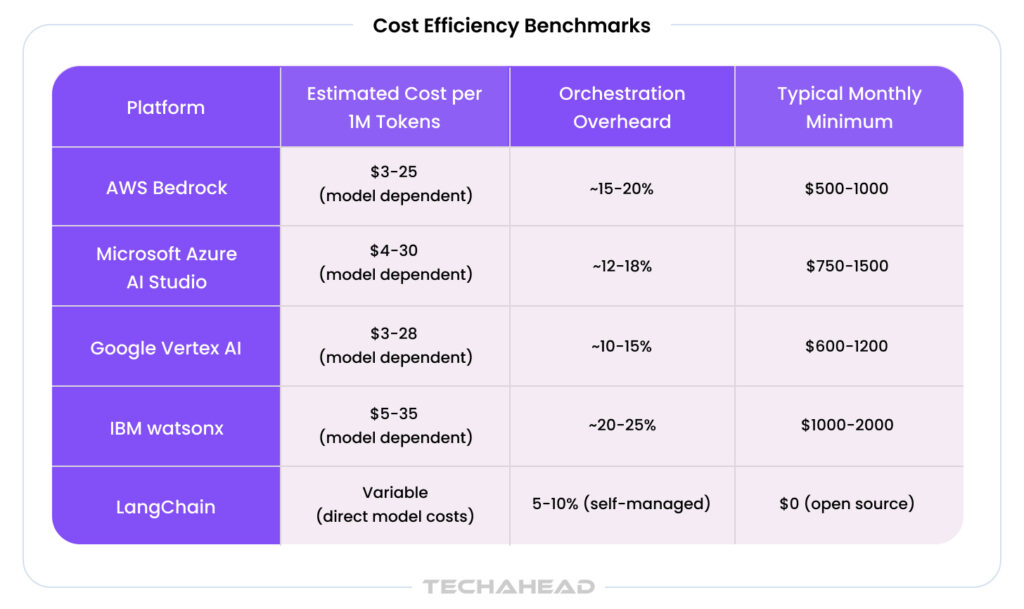
Cost per Transaction provides the ultimate business-relevant metric, encompassing platform fees, compute resources, model API costs, and infrastructure overhead. Leading organizations track this metric religiously, with targets varying by industry and use case complexity.
For reference, enterprise chatbot implementations typically target $0.05-$0.15 per conversation for orchestrated multi-turn interactions, while complex document processing workflows might justify $0.50-$2.00 per document depending on the depth of analysis required.
Scalability and Flexibility
Horizontal Scalability measures how gracefully platforms handle load increases—from 100 to 10,000 to 1 million concurrent requests. This capability proves essential for applications with variable demand patterns or rapid growth trajectories.
Uber’s real-time driver-rider matching system, which orchestrates multiple ML models analyzing supply, demand, pricing, and routing, provides a compelling case study. The platform scales from 50,000 concurrent requests during off-peak hours to over 500,000 during peak demand periods across global markets, maintaining sub-second latency through distributed orchestration architecture across multiple cloud regions.
Integration Capabilities determine how easily orchestrators connect to your existing technology ecosystem. Modern platforms offer pre-built connectors for popular LLM providers (OpenAI, Anthropic, Google, Cohere), cloud services, enterprise databases, and legacy systems.
The number and quality of integrations varies significantly: enterprise-focused platforms like IBM’s watsonx Orchestrate offer 100+ native integrations with business applications, while developer-first platforms like LangChain provide flexible frameworks for building custom integrations but require more implementation effort.


Accuracy and Quality
Task Completion Accuracy measures the percentage of orchestrated workflows that produce correct, business-appropriate outcomes. This metric requires domain-specific evaluation criteria and often involves human review of sample outputs.
JPMorgan Chase’s deployment of LLM-based contract analysis, orchestrated across specialized legal AI models, achieves 95% accuracy in identifying key contractual clauses and obligations—a benchmark established through comparison against experienced legal professionals reviewing thousands of sample contracts.

This accuracy level makes the system suitable for high-stakes financial applications where errors carry significant consequences.
Error Handling and Recovery determines how orchestrators respond when individual components fail. Robust platforms implement retry logic, fallback strategies, and graceful degradation rather than catastrophic failures.
Netflix’s content recommendation orchestration system exemplifies sophisticated error handling: when primary personalization models experience latency spikes or failures, the orchestrator automatically falls back to cached recommendations and simpler heuristic models, ensuring viewers always receive suggestions even during infrastructure issues—maintaining user experience while engineering teams resolve underlying problems.
Security and Compliance
Data Privacy and Governance capabilities ensure orchestrators handle sensitive information appropriately, particularly critical in regulated industries like healthcare, finance, and government services.
Essential features include end-to-end encryption, audit logging for all data access and model interactions, role-based access controls, and data residency compliance for international deployments. Leading platforms like Microsoft Azure AI Studio provide built-in compliance certifications (SOC 2, HIPAA, GDPR, ISO 27001) and detailed audit trails showing exactly how data flows through orchestrated workflows.
The UK’s National Health Service deployment of AI-assisted diagnostic tools demonstrates compliance requirements in practice: their orchestration platform includes complete lineage tracking for patient data, explicit consent management, and automated redaction of personal health information when routing requests to external model providers—safeguards that proved essential for regulatory approval.

Observability and Monitoring
Real-time Monitoring and Alerting enables teams to detect and respond to issues before they impact business operations. Production-grade orchestrators provide dashboards showing throughput, latency percentiles, error rates, and cost metrics in real-time.
Datadog’s 2024 State of AI Observability report found that organizations with comprehensive monitoring of their AI orchestration layers detected production issues 60% faster and resolved them 45% more quickly than those relying on basic logging—directly translating to improved reliability and customer experience.
Prompt Performance Analytics helps optimize the effectiveness of LLM interactions within orchestrated workflows. This includes tracking metrics like prompt token efficiency, response coherence scores, and user satisfaction with generated outputs.
Intercom’s AI customer support platform exemplifies sophisticated prompt optimization: they continuously A/B test prompt variations within their orchestration layer, measuring impact on resolution rates and customer satisfaction. This iterative optimization improved their containment rate from 68% to 79% over six months, a gain achieved through data-driven prompt refinement rather than model changes.

Platform Comparison: Current Benchmark Landscape
Creating a comprehensive comparison chart of major AI orchestration platforms with current benchmarks
ai_orchestrator_benchmark_chart.md
Real-World Case Studies: Benchmarking in Action
Klarna: Multi-Agent Customer Service Orchestration
Swedish fintech giant Klarna deployed an AI assistant powered by OpenAI’s models with sophisticated orchestration in February 2024, creating one of the most extensively documented enterprise AI implementations to date.
Benchmarks Achieved:
- Handles 2.3 million conversations monthly—equivalent to 700 full-time agents
- Maintains average resolution time of 2 minutes (vs. 11 minutes for human agents)
- Achieves 85% customer satisfaction rating, on par with human agents
- Provides service in 35 languages with consistent quality
- Estimated to drive $40 million in profit improvement for 2024
Critical Success Factors: Klarna’s orchestration architecture routes customer inquiries through multiple specialized agents: a triage agent classifies inquiry type, domain-specific agents handle categories like refunds, account issues, or payment problems, and a quality assurance agent reviews responses before delivery. This multi-layer orchestration achieves both speed and accuracy by matching complexity to capability.
The platform’s observability infrastructure tracks conversation sentiment, resolution confidence scores, and business metrics in real-time, enabling continuous optimization. Within the first month, this feedback loop improved containment rates by 12 percentage points through prompt refinement and agent routing logic adjustments.
Moderna: Drug Discovery and Clinical Trial Optimization
Pharmaceutical manufacturer Moderna partnered with OpenAI in 2023 to deploy ChatGPT Enterprise with custom orchestration for drug discovery and development workflows, representing one of healthcare’s most sophisticated AI implementations.

Implementation Details:
- Orchestrates 3,000+ specialized GPTs across research, manufacturing, and legal functions
- Processes complex scientific literature analysis, requiring coordination across multiple domain-specific models
- Integrates with proprietary drug development databases and clinical trial management systems
- Maintains HIPAA compliance and audit requirements for patient data
Measured Outcomes: While Moderna hasn’t published specific performance benchmarks, they report that AI orchestration reduced time for certain research tasks from weeks to days, accelerated regulatory document preparation by 40%, and enabled scientific teams to explore 5-10x more molecular candidates in early-stage research.
Orchestration Challenges: The platform required sophisticated prompt engineering to ensure scientific accuracy, multi-step verification workflows to validate critical findings, and careful integration with legacy systems containing decades of proprietary research data. Their evaluation framework prioritized accuracy and compliance over pure speed—a reminder that benchmark priorities must align with use case requirements.
Morgan Stanley: Wealth Management Knowledge Orchestration
Morgan Stanley deployed an AI assistant for its 16,000 financial advisors in March 2024, orchestrating access to the firm’s vast repository of investment research, market insights, and client information.
Platform Architecture:
- Processes queries across 100,000+ research documents, market reports, and regulatory filings
- Orchestrates multiple retrieval-augmented generation (RAG) pipelines for different content types
- Implements strict access controls ensuring advisors only receive information appropriate to client accounts
- Maintains complete audit trails for regulatory compliance
Performance Benchmarks:
- Responds to advisor queries in under 3 seconds for 95% of requests
- Achieves 90%+ accuracy in retrieving relevant research materials (validated through advisor feedback)
- Handles 10,000+ daily queries across the wealth management division
- Reduced average research time per client interaction from 20 minutes to 5 minutes
Key Innovation: Morgan Stanley’s orchestration layer implements a sophisticated relevance ranking system that prioritizes recent market analysis over older research, weights proprietary insights higher than third-party content, and personalizes results based on advisor specialization and client portfolio composition—demonstrating how domain expertise encoded in orchestration logic creates competitive advantage.
Coca-Cola: Marketing and Creative Content Orchestration
Coca-Cola partnered with OpenAI and Bain & Company to deploy generative AI across marketing operations, with orchestration coordinating creative content generation, market research analysis, and campaign optimization.

Deployment Scope:
- Generates marketing copy, social media content, and campaign concepts across 200+ markets
- Orchestrates image generation, text creation, and brand compliance checking in integrated workflows
- Processes customer feedback and market sentiment data to inform creative direction
- Maintains brand voice consistency across languages and cultural contexts
Business Impact: Coca-Cola reports 30% faster campaign development cycles and significant cost reduction in creative production, though specific dollar figures haven’t been disclosed. The orchestration platform routes creative requests through brand guideline verification agents before content generation, ensuring output aligns with global brand standards—a critical requirement that pure model access couldn’t guarantee.
Chevron: Enterprise Knowledge Management and Technical Support
Energy giant Chevron deployed Microsoft Azure OpenAI Service with custom orchestration across its global operations, focusing on technical documentation access and employee support.
Implementation Metrics:
- Supports 45,000+ employees across exploration, production, and refining operations
- Orchestrates access to millions of technical documents, safety procedures, and operational guides
- Integrates with SAP, custom engineering databases, and regulatory compliance systems
- Processes queries in multiple languages for international operations
Measured Results: Chevron’s CIO reported that the AI orchestration platform reduced time employees spent searching for information by 50%, with particularly strong impact in technical troubleshooting scenarios where engineers previously spent hours reviewing documentation to resolve equipment issues.
Safety-Critical Orchestration: Given the high-stakes nature of energy operations, Chevron’s orchestration includes mandatory human review for certain query types, automatic flagging of safety-critical information, and integration with incident reporting systems—demonstrating how orchestration architecture must adapt to industry-specific risk profiles.
The Future of AI Orchestration Metrics
As the field matures, evaluation frameworks are evolving to address emerging capabilities and challenges:
Multi-Modal Orchestration
Leading platforms increasingly coordinate not just text-based LLMs but vision models, speech recognition, code generation, and specialized analytical models. Benchmarking multi-modal orchestration requires metrics for cross-modal coherence, format transformation quality, and unified workflow performance.
Agentic Autonomy and Safety
As AI agents gain greater autonomy in decision-making and action-taking, new metrics around behavioral safety, goal alignment, and appropriate escalation become critical. Anthropic’s Constitutional AI research points toward systematic approaches to measuring whether agents behave according to specified values and constraints.
Environmental Impact
The computational costs of running AI at scale translate to significant energy consumption and carbon emissions. Forward-thinking organizations now track metrics like carbon emissions per transaction, energy efficiency of orchestration infrastructure, and optimization strategies that reduce environmental impact while maintaining performance.
Conclusion: Building a Future-Ready Evaluation Framework
The enterprises achieving transformative value from AI orchestration share a common approach: they measure what matters, benchmark rigorously, and optimize continuously. This discipline separates successful deployments that drive measurable business impact from failed pilots that never escape the sandbox.
The metrics framework outlined in this guide provides the foundation for informed platform selection, but remember that benchmarks serve business objectives rather than becoming ends in themselves. A platform delivering 10% slower latency but 40% better accuracy might be the right choice for a use case where correctness matters more than speed. Context determines which metrics matter most.
As you build your evaluation framework, start with these actionable steps:
- Document specific business problems you’re solving with concrete success criteria
- Establish current baselines for comparison and ROI calculation
- Test with realistic workloads rather than sanitized demos
- Involve stakeholders from security, compliance, finance, and end-user teams
- Plan for continuous improvement rather than treating selection as a one-time decision
The AI orchestration landscape will continue evolving rapidly, with new platforms, capabilities, and best practices emerging monthly. Organizations that embed rigorous evaluation and continuous optimization into their operating models will maintain advantages over competitors that select platforms casually or stick with initial choices despite changing requirements.
Ready to Transform Your Enterprise with AI Orchestration?
Choosing the right AI orchestration platform isn’t just a technical decision, it’s a strategic investment that impacts your operational efficiency, cost structure, and competitive positioning for years to come. The evaluation framework, benchmarks, and case studies in this guide provide the foundation, but successful implementation requires experienced partners who understand both the technology and your business objectives.
TechAhead brings over 15 years of mobile app and software development expertise to help enterprises navigate the complex AI orchestration landscape. Our team has deployed AI solutions across industries, from healthcare and finance to retail and manufacturing, delivering measurable results through rigorous benchmarking and optimization.
Whether you’re just beginning to explore AI orchestration or looking to optimize existing implementations, TechAhead’s proven methodology ensures you select the platform that best fits your specific requirements—not just the one with the flashiest marketing materials.
Take the next step:
Schedule a consultation with TechAhead’s AI specialists to assess your orchestration needs, benchmark potential platforms against your workflows, and build a roadmap for implementation that delivers ROI from day one.
Our team will help you avoid common pitfalls, accelerate deployment timelines, and establish the continuous optimization practices that separate AI leaders from followers.
Contact TechAhead today to start your AI orchestration journey with confidence, backed by data-driven evaluation and enterprise-proven best practices.
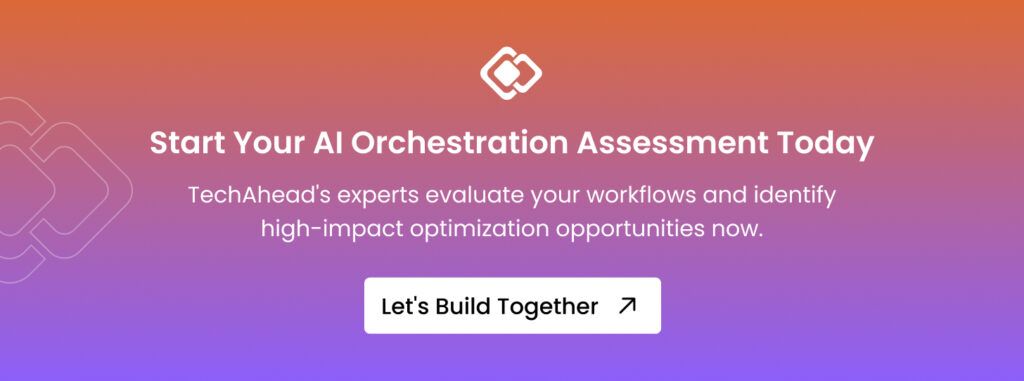
AI orchestration coordinates multiple AI models, workflows, and systems to automate complex processes, enabling scalable enterprise automation and improved operational efficiency.
Throughput, latency, uptime reliability, containment rate, cost per transaction, accuracy, scalability, integration capabilities, security compliance, and real-time monitoring are essential.
Organizations report 25-35% operational cost reductions, 40-60% faster time-to-market, and significant efficiency gains through properly benchmarked AI orchestration platforms.
Leading platforms process 400-2,500 requests per second depending on workflow complexity, with sub-second latency for standard operations in production environments.
Test integration flexibility, evaluate data portability, require open API standards, assess migration complexity, and maintain multi-platform compatibility during evaluation.
SOC 2, HIPAA, GDPR, ISO 27001 certifications are standard, along with audit logging, data residency controls, and role-based access management.
Pilot deployments take 1-3 months; measurable ROI typically appears within 6-12 months with continuous optimization driving compounding performance improvements.

